This story is our second in a series on Black family history to celebrate Black history this February.
Once, when Raphael Morris was 10 years old, he and his father drove through Hillsdale, Missouri, just a few miles from their hometown, Pagedale, and stopped in front of Greenwood Cemetery. “You have family in there,” his father told him. As a child, Morris said, he didn’t think much of the news and didn’t think twice about the cemetery.
Until more than 50 years later.
Morris found himself back at the burial grounds in 2016 after seeing a news program about what poor condition the land was in. So, he traveled just 15 minutes from his home in Olivette to the cemetery to see for himself.
“It was absolutely nothing but a forest. You couldn’t see a single headstone on the property,” said Morris, now 69. By then, he said, Greenwood was mostly riddled with discarded mattresses, television sets, furniture and other garbage dumped there over the years.
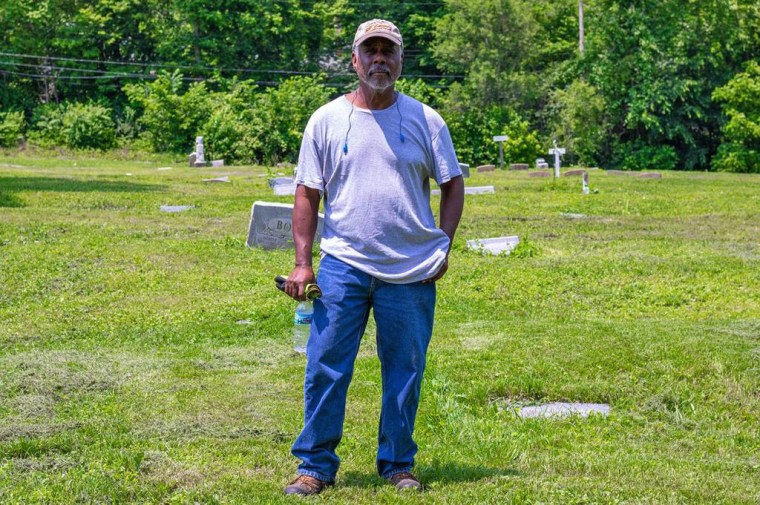
“Sometimes I think certain people will clean out their whole house and dump it in the cemetery,” he said.
With that, Morris retired from his job at a chemical company and devoted himself to restoring the cemetery. He, a historian, Etta Daniels, and a group of concerned citizens founded the Greenwood Cemetery Preservation Association. Morris said at least a dozen of his family members are buried there. But through the growth, debris and garbage, he has only been able to find headstones for an uncle and a great-grandmother.
Greenwood Cemetery was founded in 1874 as the first Black commercial burial ground for the St. Louis area’s growing Black population after the Civil War. At least 50,000 people were buried in Greenwood, including Harriett Scott who, along with her husband, Dred Scott, sued for their freedom in the historic Supreme Court case, Dred Scott v. Sandford; Charlton Hunt Tandy, a Civil War veteran and lawyer who helped free enslaved families; and Lucy Delaney, who wrote the famed 1890s slave narrative, “From the Darkness Cometh the Light.”
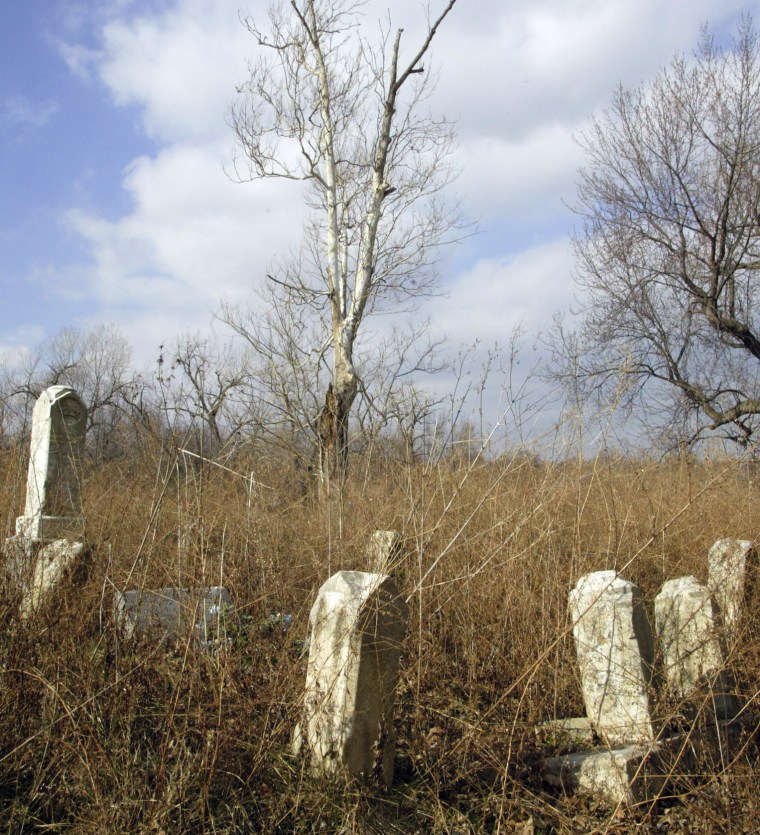
Greenwood was maintained by members of the founding family well into the late 1970s before it was sold and underwent “severe neglect, abuse and vandalism,” according to the association. A group of locals formed the Friends of Greenwood in 1999 to preserve the cemetery. But, in the years that followed, many had grown too old to care for the land and it fell into disrepair once more.
Overgrown fields and woods — and vandals — have since damaged grave markers. In some areas, severe erosion has exposed human bones.
Since the Greenwood Cemetery Preservation Association was formed, the group has cleared out about half the cemetery and located several documents to identify those buried. So far, they’ve found some form of record for at least 35,000 people.
“As far as record-keeping, when we first started in 1999, we had nothing. Today, you could give me a name and I can go to the digital records and say, ‘Yes, this person is there,’” Daniels said. “For some of these souls, the only record of their existence may be Greenwood Cemetery records.”
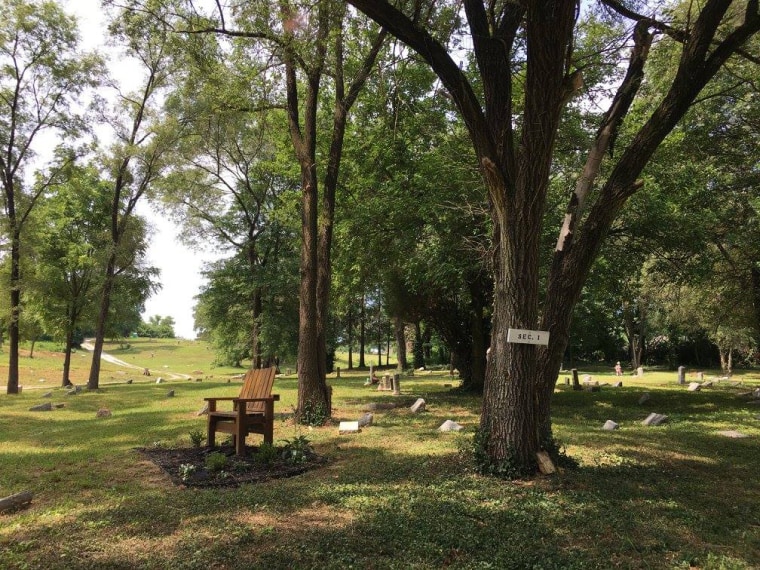
The Greenwood association is one of many groups across the country working to restore, preserve and honor centuries-old historically Black burial sites. For the descendants, students and simply concerned citizens advocating for cemeteries in cities across the U.S., the neglect of Black burial grounds is an extension of the racism Black people experience while living. In states like Georgia, Missouri and North Carolina, volunteers are working to clean cemeteries and restore headstones; advocates in Virginia and Louisiana are battling developers to keep Black cemeteries intact; and groups in Texas and Florida are seeking justice for Black burial grounds that were paved over to build properties and highways. The fight for Black cemeteries is being fought on several fronts in a growing movement urging the nation to value and honor Black life and death.
The movement to preserve Black cemeteries is inherently tied to the predatory land practices of the Jim Crow era, said Kami Fletcher, an associate professor of history at Albright College and president of the Collective for Radical Death Studies. Black towns and cemeteries were disturbed or destroyed for industrial and infrastructure developments.
“When you look at land ownership in this country, it is absolutely at the intersection of patriarchy, whiteness, racism and Jim Crow — really nefarious ways in which those developers ended up getting land,” said Fletcher, the author of “Real Business: Maryland’s First Black Cemetery Journey’s Into the Enterprise of Death, 1807-1920.”
“Jim Crow allowed Black cemeteries to go unkempt, and city dollars flowed to white cemeteries. There’s a lot more to be said about how whites were just allowed to dislocate Black folks and trample all over Black cemeteries,” Fletcher said.
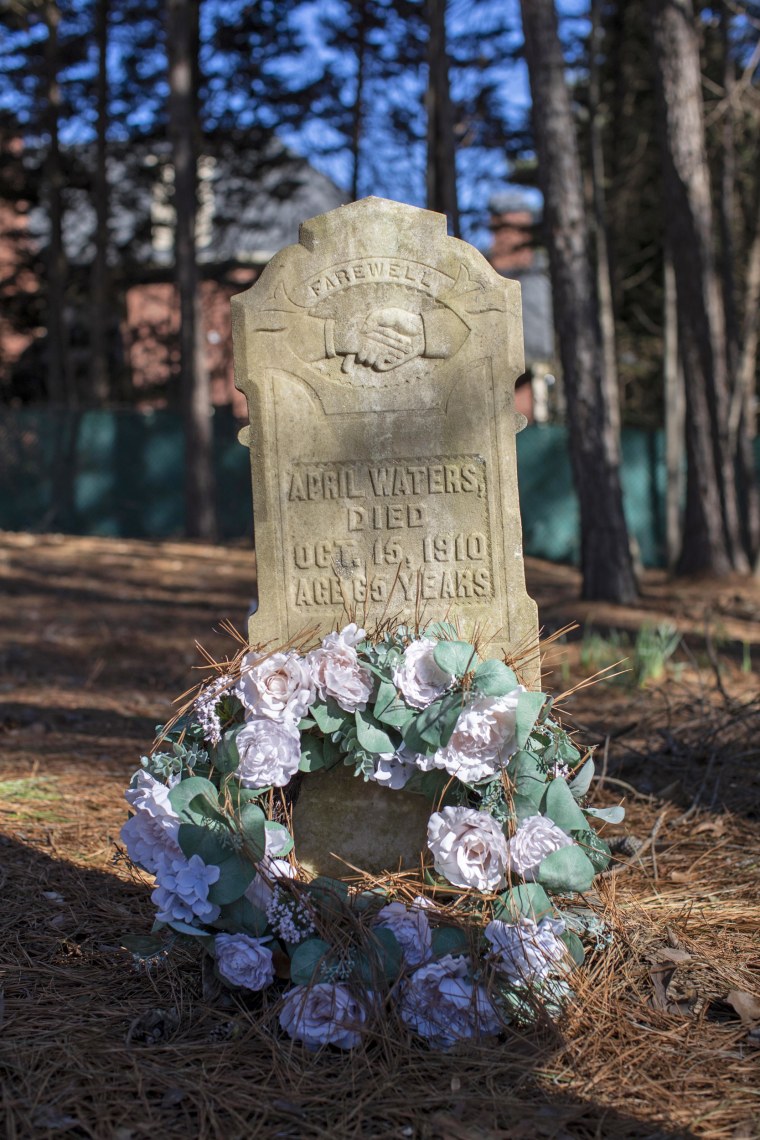
Although some cities across the country have — to varying degrees — supported the growing preservation movement, federal legislation has been slow to come. In 2020 the Senate passed a version of the African American Burial Grounds Network Act, which would create a database of historic Black burial grounds, help to preserve the sites, and provide grants for research, all under the National Park Service. Rep. Alma Adams, D-N.C., introduced the bill in 2019 in the House, where it has remained.
Roots of restoration
Like all facets of racism in the U.S., the injustice of destroyed and devalued Black cemeteries can be traced to slavery. Before emancipation, enslaved African Americans were largely buried on plantation grounds or plots of land owned by white people, usually with only rocks serving as grave markers. Freed African Americans were often buried in potter’s fields.
After emancipation, several African American cemeteries emerged, either on the land of Black churches or created by Black citizens. As much as these cemeteries are rich with tradition and history, they also tell stories of segregation and racism.
“There really were no legal protections for Black folks and their property,” said Antoinette Jackson, an anthropology professor at the University of South Florida and founder of the Black Cemetery Network. “So cemeteries were one of those things that were unprotected. That’s the underpinning of why lands where cemeteries sat were vulnerable.”
But now, because “people are a lot more vocal, a lot more knowledgeable,” she said that “people are not standing for this any more.”
Efforts at preservation are just as much about education as ethics, experts say, and Black cemeteries and their records are vital for historical research. Cemeteries are also sites of connection, where families can learn about their ancestors and honor them with memorials.
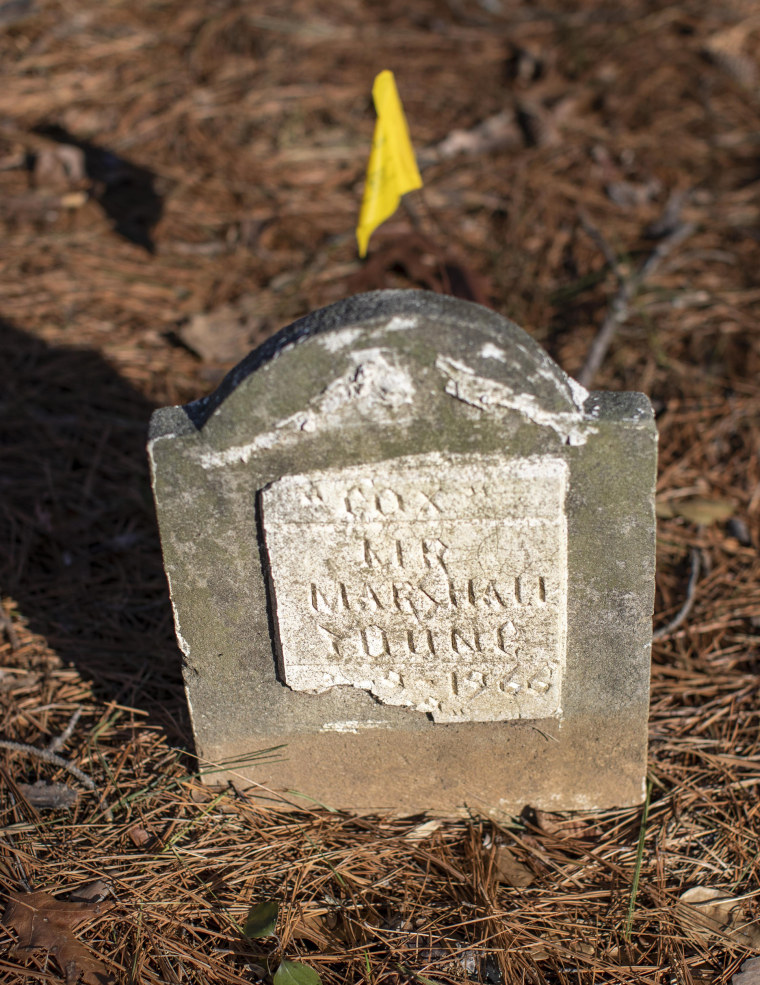
Efforts to restore
Yamona Pierce, 52, has always been interested in genealogy. She’s spent more than a decade tracking her family’s lineage, documenting names and former addresses. So when she learned that her third great-grandparents, farmers Owen Hood and Jane Hamilton Hood, were buried at the Pierce Chapel Cemetery in Midland, Georgia, she and her two teen daughters, Hannah and Leah, traveled from Washington, D.C., to see the burial grounds in 2019. Accompanied by her then-93-year-old aunt, Sarah Rozier, who lived in the area, Pierce and her daughters were giddy as they walked down the path to the burial grounds.
What they saw was unexpected.
“We were in disbelief. I had never seen anything like that,” Pierce said. “It was covered with trash and overgrown with brush. We had to move tree limbs so we could make our way into the cemetery. There were car tires, debris, auto parts. It was just a total mess.”
Pierce said she was “profoundly saddened” to see such a rich piece of her family’s legacy reduced to a dumping ground. What’s more, Rozier was certain they’d only seen a portion of the cemetery. The entire burial ground was much larger, but covered by impenetrable woods.
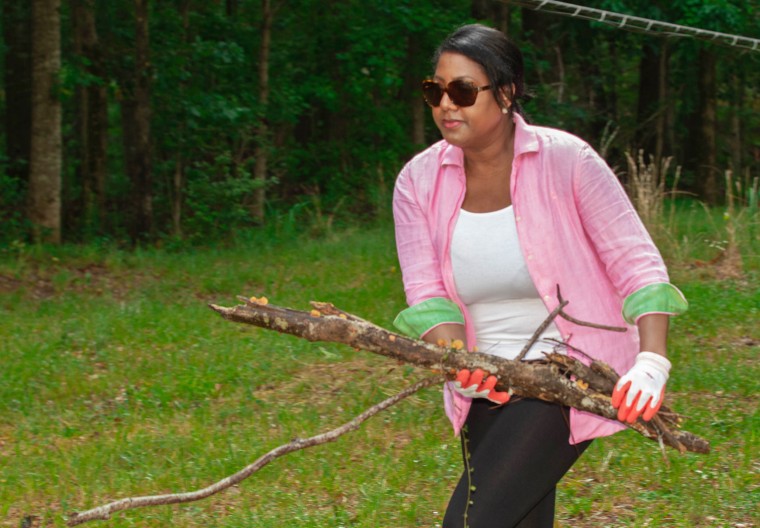
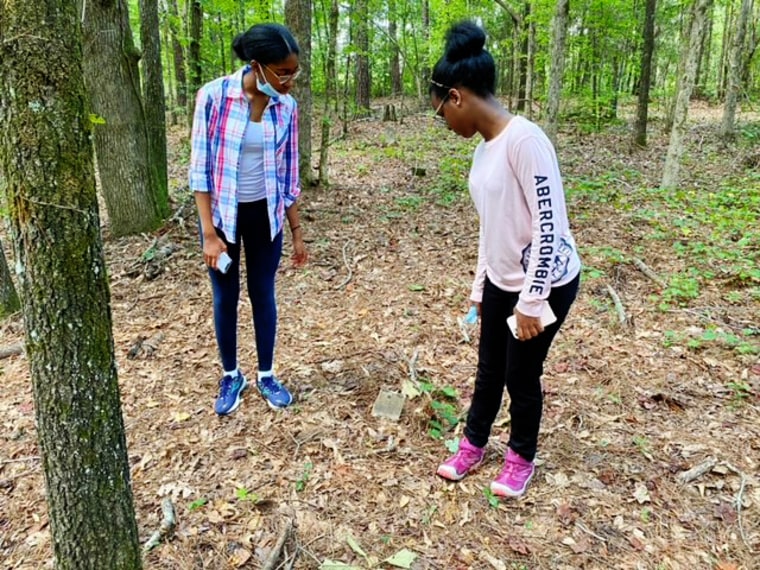
In the years that followed, Pierce founded the Hamilton Hood Foundation and set out to restore the Pierce Chapel Cemetery. For a long time, descendants of those buried in the cemetery, established in 1834, maintained the burial grounds, “but at some point the land owner put up a fence and a padlock and the descendants were told they were no longer allowed to come and maintain the cemetery. That’s one of the reasons the cemetery fell into disrepair,” Pierce said. Pierce said the owner has allowed the group to restore the cemetery, but has had little involvement in the process. The owner did not immediately respond to a request for comment.
Pierce along with the Friends of Pierce Chapel African American Cemetery and volunteers have spent nearly three years cleaning out the cemetery and identifying people buried there. The group has also been lobbying the Georgia Power electric company and cable provider Mediacom to remove power and cable lines they installed. Pierce said she and other advocates contacted Georgia Power and Mediacom to remove the lines last spring, and Georgia Power removed its line last October. Pierce said Mediacom has agreed to take down its cable line, but has not set a date yet.
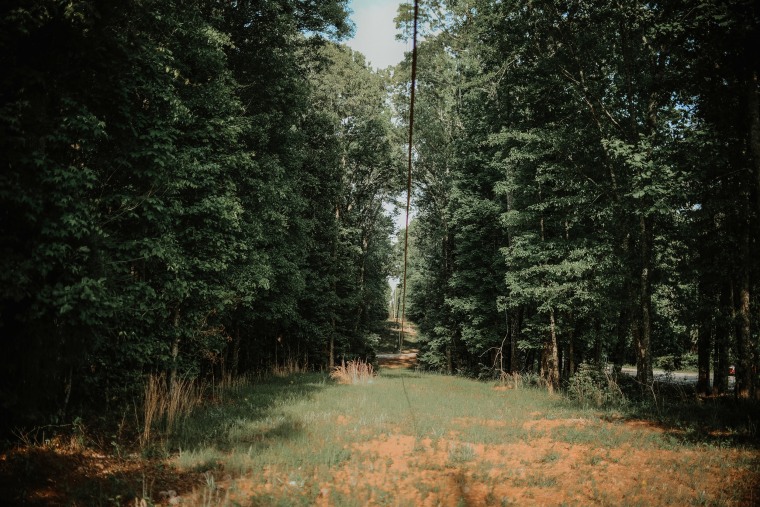
Chad Nation, a spokesperson for Georgia Power, said the power line had been placed over the cemetery at least 80 years ago. But when the company learned about it, “we moved quickly to remove and relocate the power line with reverence,” Nation said.
Pierce said the company crushed headstones during construction of the original power line decades ago, but Nation said, “It’s unclear that we caused any damage.” Mediacom spokesperson Tom Larsen told NBC News that the company is planning to remove its cable line and poles from the cemetery area in the coming weeks.
More preservation efforts are underway about 500 miles northeast, in Durham, North Carolina, where Friends of Geer Cemetery has partnered with a monument company, Eagle Scouts, and community organizations like Keep Durham Beautiful to restore and preserve Geer Cemetery. More than 1,600 Black people from the Durham area are buried at the cemetery, which was established around 1877. And the group has worked to clear out the land, hold tours for the public, and learn all it can about those buried at Geer through records and oral histories.
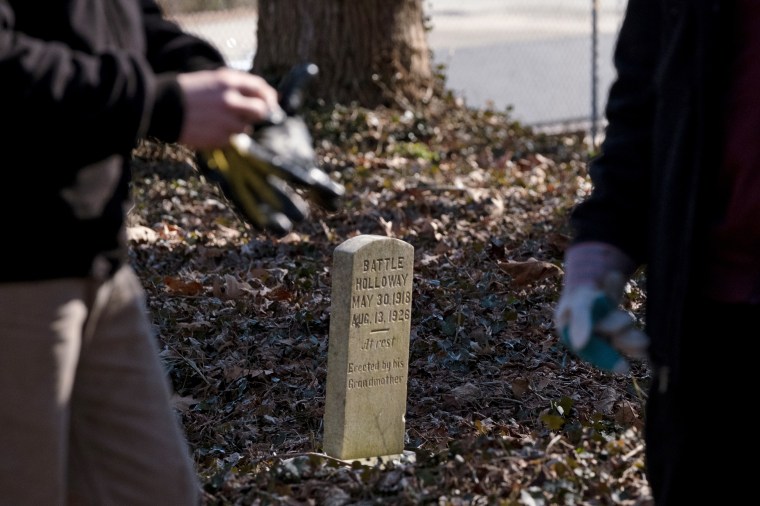
The latest iteration of the group, founded in 2019, focuses on clearing out the nearly four-acre cemetery, inviting the community to help care for the land, and tracking down any record of those buried there through everything from marriage and death records to city directories and church programs. For decades, the grounds were so filled with underbrush that people “couldn’t find the cemetery,” said Debra Gonzalez-Garcia, the organization’s president.
The city closed Geer Cemetery in 1930, deeming it a health hazard. Throughout the decades small groups would come and go, cleaning the property how they could. But Gonzalez-Garcia said she hopes the latest effort is a sustainable turning point for this cemetery.
“You can make the place look pretty. But if you don’t have a perpetual plan or a way to continue it, in another 10 years it’ll look just like it did when you started,” she said. “So your goal shouldn’t be, ‘Let’s make it pretty and then we’re done,’ but also preserving those life stories.”
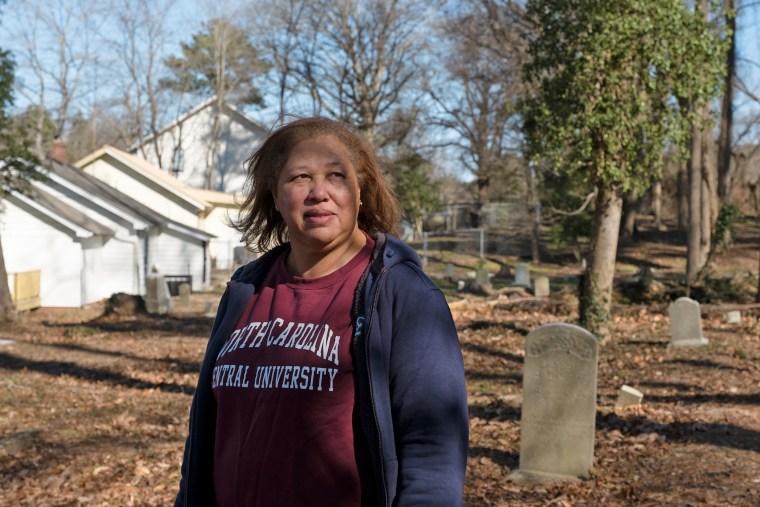

In some places, city leaders have supported grassroots efforts to reclaim Black cemeteries. Johns Creek, Georgia, agreed in 2021 to allocate $100,000 to the Macedonia African Methodist Church Cemetery and enforce a law to prevent desecration and vandalism of local cemeteries, said the town’s mayor, John Bradberry. One resident, Kirk Canaday, pushed the council to enforce the law. He’s been involved with the two-acre cemetery since 2017 as local groups worked to halt plans to build an 80-foot tall billboard near it.
Macedonia was part of a large plantation before being deeded to the Macedonia Methodist African Church in 1867. It was neglected after the church disbanded in the 1990s.
These days, Macedonia is often riddled with garbage, and large trees have taken over the grounds, with pine needles sprinkling the land. Canaday, a member of the Johns Creek Historical Society, is leading the latest preservation efforts, and said that aside from needing a big cleanup, desecration has been a major issue at Macedonia.
“The church there was vandalized. A lot of headstones were broken and scattered, stolen,” Canaday said. “Some of it is benign desecration. A lot of graves have field stones as grave markers so some people go up there to clean the cemetery and they take all the field stones and pile them up. They didn’t know those were markers for graves.”


Along with volunteers, Canaday has enlisted the help of the Johns Creek Historical Society, Girl Scout troops and other local organizations. Groups of students with Student Leadership Johns Creek, a nonprofit leadership program, have even created four short films about the cemetery. But Canaday said it will be years before his vision for a memorial garden honoring the cemetery and surrounding land is realized.
Rescuing sites from new development
Lenora McQueen has written letters urging city and state leaders in Virginia to cancel plans to build a railway through the Shockoe Hill African Burying Ground in Richmond, whose 31 acres are marred by billboards, an abandoned gas station, railroad tracks and part of Interstate 64. The grave markers have all disappeared over time. This, she said, means people rarely know it’s a cemetery.
McQueen first learned of the burial ground in 2017 when she traced a relative, an enslaved woman named Kitty Cary, there.
“I have been researching and advocating for the burial ground ever since,” she said, noting that city infrastructure decisions have led to its demise. “This burial ground was purposely made to disappear from the visible landscape. ”
The cemetery, also known as Second African Burial Ground, was established in 1816 and closed in 1879 due to overcrowding, according to Preservation Virginia, a nonprofit organization. More than 22,000 people were buried there and, before it was closed, grave robbers stole bodies from the burial ground to use in anatomy classes at local colleges, according to McQueen and the preservation group.
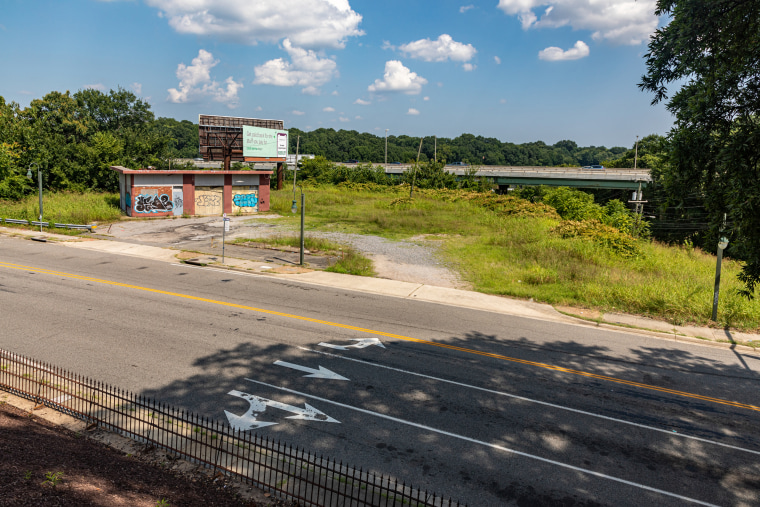
Over the years, McQueen, along with a group of historians, archaeologists and volunteers, have made great strides in preserving the cemetery, including getting the burial ground listed on Virginia Preservation’s most recent list of endangered historic places and convincing the City of Richmond to purchase part of the cemetery. The advocates are now working to have the burial ground added to the National Register of Historic Places.
Even with all the accomplishments, McQueen said there has been no indication that plans for the railway or to extend Interstate 64 through the cemetery have been halted, and thus, the cemetery remains at risk. However, the Virginia Department of Transportation said in an email that it is aware of the burial ground and that plans to improve the interstate won’t “disturb the cemetery.” Meanwhile, a spokesperson for the Virginia Department of Rail and Public Transportation, Amy Friedenberger, said the department and the Federal Railway Administration were “currently re-evaluating” the rail “project’s effect on the Shockoe Hill Burying Ground.”
Elsewhere in Richmond, advocates for and descendants of people buried at East End Cemetery say they feel they’re being shut out of plans for the cemetery. An estimated 15,000 Black people are interred at East End, dating to the 1890s. Friends of East End, formed by descendants and volunteers unofficially in 2013 and formally four years later, launched a petition last March, calling for transparency, accountability, and “genuine descendant engagement,” after a private company affiliated with the Enrichmond Foundation, a nonprofit supporting city parks and recreation, took ownership of the 16-acre burial ground in 2019, despite intense public criticism, according to Brian Palmer, a group member who has at least one relative buried at East End.
The group spent years clearing out tangled vines, fallen trees, and trash from the abandoned cemetery. Now, they say they no longer feel welcome. Friends of East End suspended their reclamation efforts in 2020 after being “pushed out by the cemetery’s new owner,” Palmer said. They worry about the future of East End as the new owner has “presented no plan to save” the cemetery, he said.
“What they proposed is to create a glorified park. I call it a recreation plantation. It centers more on construction than preservation of the cemetery,” Palmer said. “Enrichmond has held Zoom sessions, and they’ve muted all of us. We fought to be heard. They never held a fair, public meeting at which they answer questions and are held accountable to descendants and citizens.”
Enrichmond officials declined to comment on the matter but wrote in a March 2021 statement that claims the organization wants to convert East End Cemetery into a recreation park are “completely false.”
Efforts for redress
While groups across the country work to restore their local cemeteries and keep the grounds out of developer’s hands, others are reckoning with news that some Black cemeteries have been long forgotten and paved over. In North Dallas, a once-thriving Black community’s cemetery, which was established in the 1860s, was “virtually eliminated” by Dallas’ Central Expressway in the 1930s. It wasn’t until the early 1990s that the city built a memorial to honor the historic site.
For nearly a century, there was little evidence that Zion Cemetery, considered the first African American cemetery in Tampa, Florida, even existed. It was rediscovered in 2018 under a public housing complex. Ultimately, last June Florida Gov. Ron DeSantis signed a bill to create the Task Force on Abandoned and Neglected African-American Cemeteries.
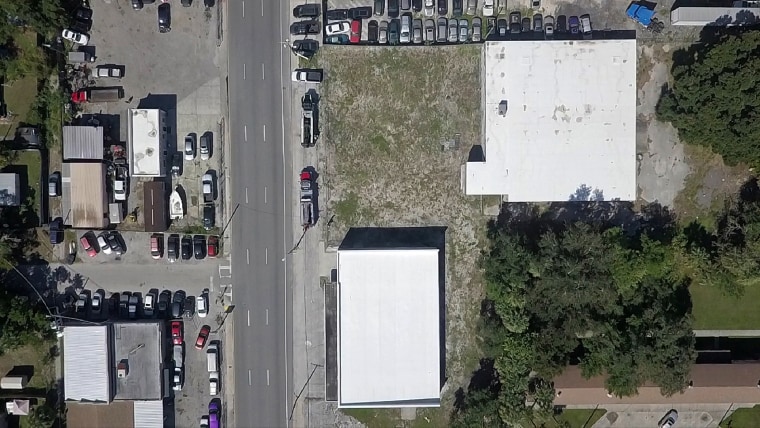
Through the Black Cemetery Network, Antoinette Jackson is working with groups to advocate for a trio of other forgotten cemeteries: Moffett, Evergreen and Oaklawn Cemeteries in St. Petersburg, Florida. Oaklawn is now under a baseball stadium, Tropicana Field (home of MLB’s Tampa Bay Rays), and a parking lot. Evergreen and Moffett are partially covered by a nearby interstate.
The segregated cemeteries operated until 1926, when the city condemned the properties. Now, Jackson is working with the University of South Florida, the African American Cemetery Alliance of Tampa Bay, the Florida Public Archaeology Network, and other advocates to seek justice for the burial grounds. Janelle Taylor, a spokesperson for the City of St. Petersburg, said the city is aware of the graves and are analyzing the area but haven’t “made any plans for the site at this time.”
The Black Cemetery Network grew out of a 2020 University of South Florida initiative called the African American Burial Grounds and Remembering Project, that brought together historians, genealogists and community members to advocate for erased cemeteries in the area. Today, there are 34 Black cemeteries registered in the network’s Black burial ground archive. Jackson said she hopes the list will continue to grow.
“We want a memorial to indicate that this happened in the first place, and then a marker,” Jackson said. “People want to be involved in the conversations about what the redevelopment efforts are going to be. They want to be part of the planning of what the site could be. Not only do they want a memorial, they want to actually be part of the vision of what’s next.”

